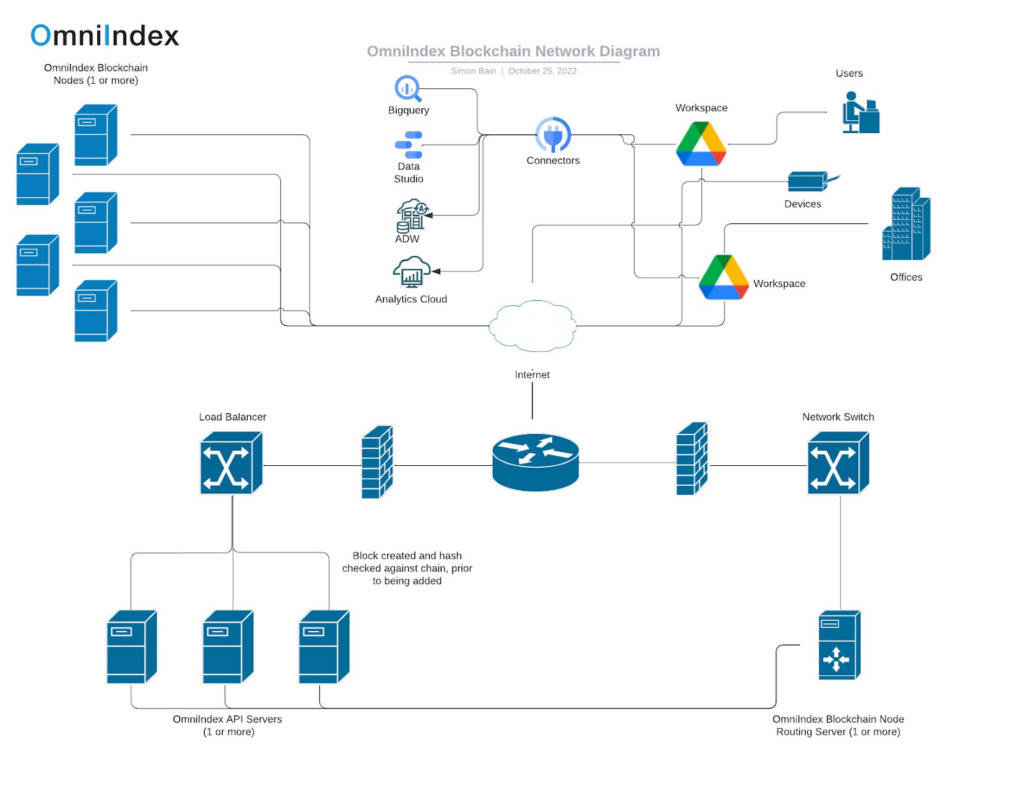Why Web3 with a Hybrid Blockchain is the Only Viable Data Security Solution
OmniIndex CEO Simon Bain discuses blockchain technology and the OmniIndex Hybrid solution
My perspective on Blockchain has significantly evolved. I’ve transitioned from questioning its viability within organizational trust models, to wondering why more organizations aren’t embracing the advantages of a Hybrid Blockchain. And, indeed, making it a foundation for the OmniIndex confidential data solutions.
This shift stems from a deeper understanding of Blockchain’s potential and a recognition that the “one-size-fits-all” approach often advocated and celebrated by cryptocurrency enthusiasts is unrealistic.
For instance, many assert that a true Blockchain must be completely decentralized, based on a public trust network, and immutable. However, who says this must be the case? While admirable in certain circumstances, these limitations can cause a blockchain to lose much of its security and privacy features. For example a full public trust network is simply infeasible for any organization, let alone one handling confidential or regulated information.
Recognizing the limitations of both public and private Blockchains, I turned to the Hybrid Blockchain model. This approach offers a compelling solution by seamlessly integrating the strengths of both worlds into one secure and private data storage solution.
How Hybrid Blockchains Enhance Data Security:
- Immutable Data Storage: Hybrid Blockchains leverage an immutable data store underpinned by a Merkle root, enhancing speed, auditability, and security.
- Controlled Access: Organizations maintain granular control over data access, both for reading and writing, while ensuring the Blockchain’s integrity remains intact. (Especially when you add a zero-trust approach to data access.)
- Enhanced Security: By distributing Blockchain nodes across both internal and external networks, Hybrid Blockchains create a robust security perimeter that is significantly more challenging for hackers to penetrate.
- Improved Data Availability: Organizations can ensure continuous data availability without compromising security and without risking data integrity (as the data is immutable and so cannot deliberately or accidentally be altered.)
Example: The OmniIndex Hybrid Blockchain
Our own internal Hybrid Blockchain illustrates this approach. It is used in our PostgresBC data platform and provides the foundation for our Dropblock confidential data solutions. It has:
- Public Network Access: Five Blockchain nodes operate within the public network, enabling user accessibility from diverse locations.
- Secure API Servers: Three API servers act as trusted access points, controlling interactions with the nodes and securely managing encryption keys and algorithms. These servers reside within the organization’s firewall.
- Flexible Access Models:
- Application Integrations: Add-ons for platforms like Google Workspace and Google BigQuery provide secure access for authorized groups, enabling the utilization of Blockchain-stored data or files without direct node interaction.
- Native Applications: Tools like the OmniIndex Explorer, CLI and Dropblock for Desktop offer both API access and direct read access to Blockchain nodes, providing flexibility in scenarios where API access may be limited.
Below is an example of how our OmniIndex internal Hybrid Blockchain is organized.

The Bottom Line
By implementing a Hybrid Blockchain effectively, organizations can:
- Enhance security: Mitigate the risk of cyberattacks.
- Improve data availability: Ensure continuous access to critical data.
- Increase ROI: Streamline operations and enhance efficiency.
If your organization hasn’t yet explored the potential of Hybrid Blockchains, I encourage you to delve into the available resources and assess how this technology can significantly enhance your data security posture.
And, as with all technology and in life, I implore you to never listen to people who say something has to work in only one way.

